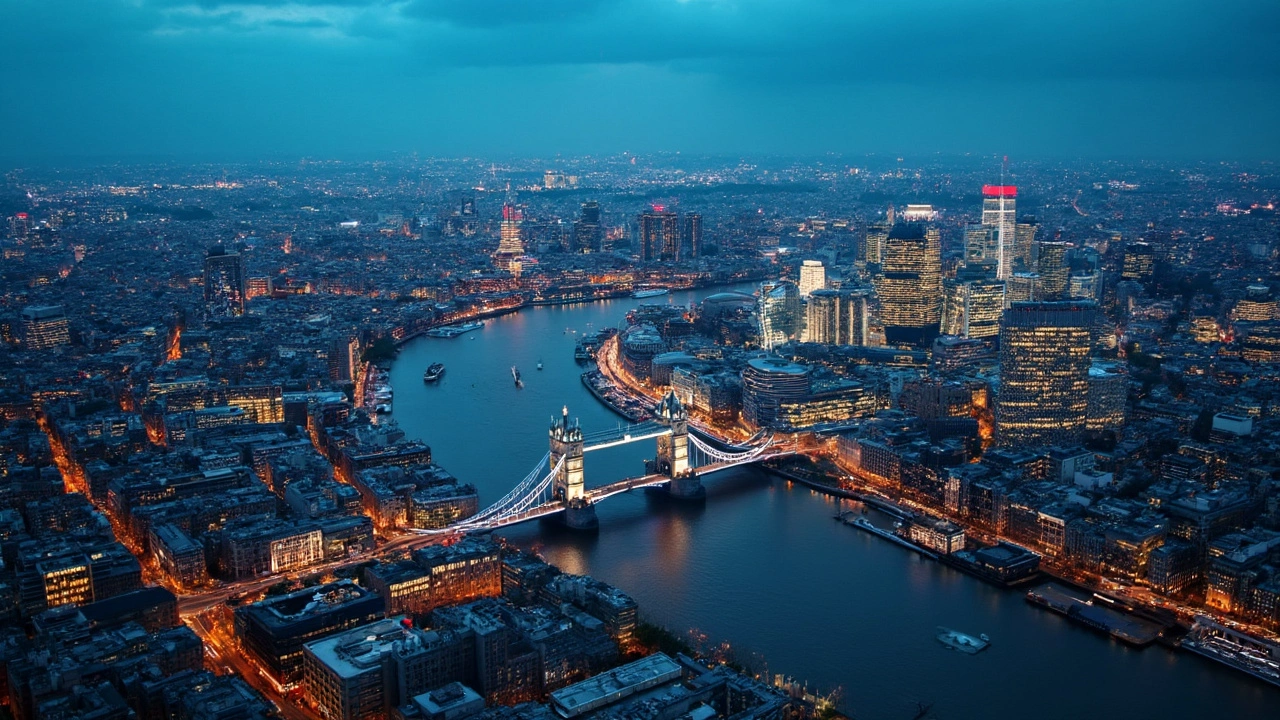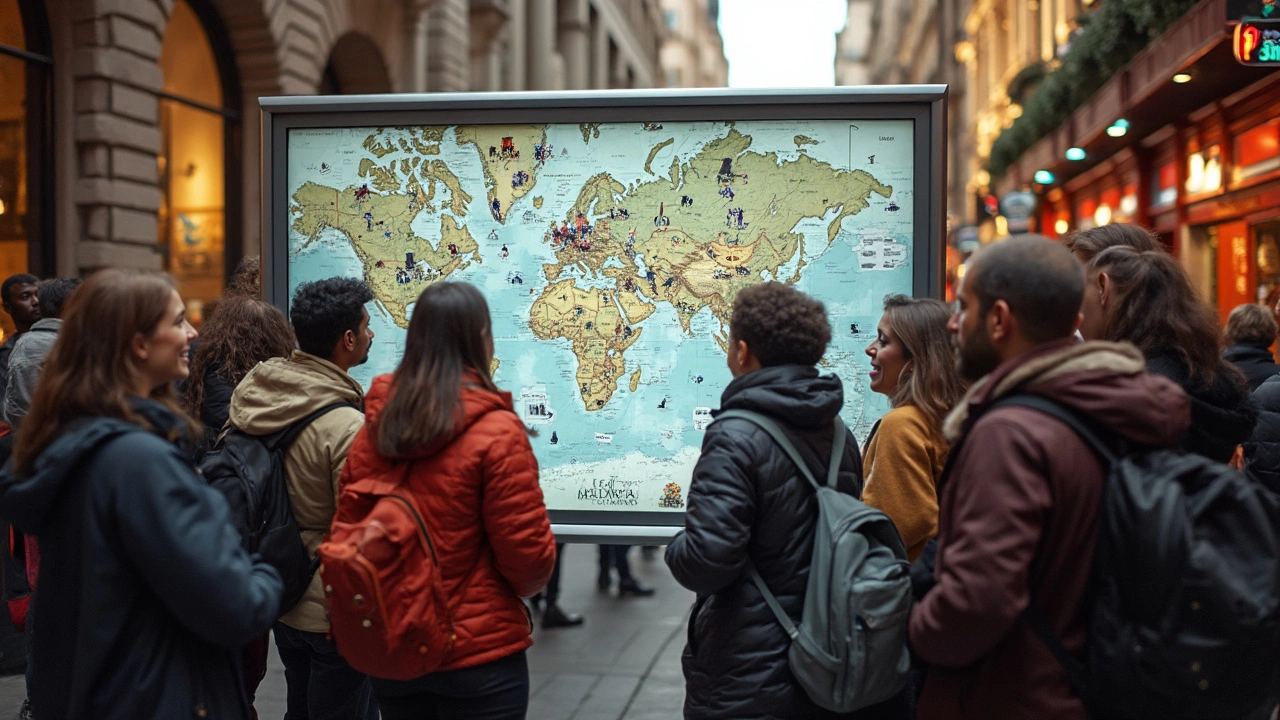
Ever heard someone claim that London is the biggest city in the world? It’s a common myth that gets tossed around, but the truth is a bit more complicated. People use 'biggest' in all sorts of ways—sometimes they mean population size, sometimes actual land area. If you're comparing cities, it's not a one-size-fits-all thing.
London really is massive, both in size and reputation. With over 8 million people squeezed into its 32 boroughs, the city buzzes day and night. But is it really the king of all cities on the planet? Not if you look at the hard numbers. Some cities pack in far more people—or stretch across way more land—than London does. It's easy to get lost in the stats, especially since different countries measure city boundaries in their own way. The whole 'biggest city' debate is like comparing apples, oranges, and maybe a few pineapples for good measure.
- Breaking Down 'Biggest': What Does It Really Mean?
- London by the Numbers: Population and Size
- Cities That Outsize London: Surprising Contenders
- Why People Think London Is the Biggest
- Quick Tips for Navigating Big Cities Like London
Breaking Down 'Biggest': What Does It Really Mean?
When someone says a place like London is the “biggest city,” what are they even talking about? Are we measuring the number of people, the amount of space it covers, or how busy the streets get? Turns out, there's no single, official way to decide which city is the biggest. Here are the main things folks usually mean:
- Population: How many people live there. Some cities sound bigger just because way more people are packed into a smaller area.
- Land Area: How much ground it covers. Some cities spread out forever, even if not many people actually live there.
- Population Density: How tightly people are packed in. London feels busy, but cities like Dhaka go way beyond that crowded feeling.
- City Proper vs. Urban Area: 'City proper' is the area officially inside city boundaries. Urban area usually means the connected sprawl around the official center, including all the suburbs and even nearby towns that blend in.
Let’s look at how these measurements can tell pretty different stories. For example, Tokyo’s urban area has over 37 million people—way more than London. Meanwhile, cities like New York and Shanghai might take up way more space on the map. Here’s a quick table to show the differences:
| City | Population (Urban Area) | Land Area (Urban Area, km²) |
|---|---|---|
| London | ~11 million | 1,737 |
| Tokyo | ~37 million | 8,547 |
| New York | ~19 million | 8,683 |
So next time the "biggest city" debate comes up, just ask: Do you mean the most people, the most space, or something else?
London by the Numbers: Population and Size
First off, let’s get into the digits. London’s population sits at about 8.9 million as of 2024. That puts it ahead of most European cities, but it’s still miles behind global giants like Tokyo or Shanghai. If you count the whole urban area around London—think the wider ‘metropolitan area’—the number jumps up to nearly 14 million.
Now, about size: The official area of Greater London covers around 1,572 square kilometers (about 607 square miles). That’s enough room for centuries-old markets, football stadiums, parks bigger than my dog’s favorite field, and neighborhoods that never sleep. But compared to other cities that sprawl for thousands of square kilometers, London’s footprint is pretty neat and tidy.
Just to see how London compares, check out this quick table:
| City | Population (City Proper) | Land Area (km²) |
|---|---|---|
| London | 8.9 million | 1,572 |
| Shanghai | 24 million | 6,340 |
| New York City | 8.8 million | 783 |
| Tokyo | 14 million | 2,194 |
The bottom line? London scores big in Europe but doesn’t hit world records for size or population. If you’re wandering the streets, it can feel huge, but by the stats, London sits somewhere in the busy middle—not at the top.

Cities That Outsize London: Surprising Contenders
Here’s where a lot of people are surprised: London doesn’t even crack the top five when it comes to the world’s largest cities by population or land area. Take a look at cities across Asia and the Americas—they blow past London’s numbers in more ways than one.
Check out these giants:
- Tokyo, Japan: The Tokyo metro area is home to over 37 million people. That’s like squeezing four Londons together.
- Shanghai, China: Shanghai’s city proper counts more than 24 million people. The city’s boundaries are tight, but the headcount is huge.
- Sao Paulo, Brazil: It’s got over 22 million in its urban sprawl, with traffic jams to prove it.
- Mexico City, Mexico: About 22 million people live in Mexico City’s metro area—no wonder the place never sleeps.
- Moscow, Russia: Bigger than London in both land and population, with more than 12 million folks inside the city limits.
And if we’re talking pure land area, cities like New York and Sydney stretch out for miles—New York’s metro area covers about 13,000 square kilometers, much larger than London’s 1,572 sq km.
| City | Population (metro area) | Land Area (sq km) |
|---|---|---|
| Tokyo | 37,000,000+ | ~13,500 |
| Shanghai | 24,000,000+ | 6,340 |
| London | 9,600,000+ | 1,572 |
| New York | 19,000,000+ | 13,000 |
| Sydney | 5,300,000+ | 12,400 |
The point? London is definitely huge, but it’s not the world’s biggest city by most standards. Don’t be fooled by the hype—there’s always a city somewhere with even busier streets or bigger neighborhoods.
Why People Think London Is the Biggest
The idea that London is the biggest city in the world pops up everywhere, from tourist chat to media headlines. So why all the hype? It's not just bragging rights—London's history, pop culture impact, and international status all play a part.
For starters, London is a global hub. When you see it on the world stage—football, music, film, finance—it just feels huge. People picture the endless Circle Line, the long sprawl of the M25, and those 32 boroughs as one never-ending landscape. To some, it seems to stretch on forever compared to smaller European capitals. Plus, Brits are known for talking up their capital to friends across the pond (or anywhere).
History is another big factor. By the early 1900s, London was the largest city by population in the world. This fact stuck in the collective memory, even though now cities like Tokyo and Shanghai top the charts. Old habits die hard, and it’s easy for people to repeat what they’ve always heard.
There’s also confusion about how cities are measured. Greater London covers 1,572 square kilometers, but if you look at places like Tokyo’s wider metropolitan area, it blows past London on paper. Here’s a side-by-side to make it clearer:
| City | Population | Land Area (km²) |
|---|---|---|
| London (Greater) | ~8.8 million | 1,572 |
| Tokyo (Metropolitan) | ~37 million | 13,452 |
| Shanghai | ~24.9 million | 6,340 |
The big takeaway? London’s reputation as the world’s biggest isn’t true by modern numbers, but its place in history and global culture make the rumor stick. If you’re planning a visit, don't worry—there’s still more than enough city to get lost in.

Quick Tips for Navigating Big Cities Like London
Getting around a huge city like London feels overwhelming at first, but a few smart moves can make your life way easier. The London Underground (locals call it “the Tube”) is reliable and covers nearly every area you'd want to visit. Most big sights and even far-out districts are just a few stops apart—just grab an Oyster card or use contactless cards or your phone for the cheapest fares. They make catching trains almost painless.
If you don't fancy the Tube, there are buses running all day and night, and you can't miss those big red double-deckers. Use Google Maps or Citymapper—these apps update in real time and can save you from long waits or surprise detours. Black cabs and ride-share apps work fine too, but keep in mind traffic can completely jam up central London, especially near Oxford Street or during events.
Walking actually ends up faster than you’d think, especially in the West End or South Bank. The city packs plenty into walkable spots—plus you get to duck into hidden cafes, quirky shops, or just people-watch if you’re feeling nosy, like my cat Whiskers spying out the front window.
Watch out for the “contactless only” rule in many shops and even some public toilets. Also, restaurants sometimes don’t split bills, so plan ahead if you’re eating out with friends. For public transport, always stand on the right when riding escalators—trust me, locals get annoyed quick if you block their mad dash on the left side.
- Travel off-peak: Tube fares drop after 9:30am weekdays and all day weekends.
- Download offline maps: Mobile data vanishes in some Tube tunnels and corners near the Thames.
- Stay aware of Zones: London's fare zones matter—crossing into outer zones jumps your price.
- Mind your belongings: Like any big city, pickpocketing can happen in busy areas.
Here’s a quick breakdown of the busiest Underground lines for visitors:
| Line | Main Stops | Peak Hours |
|---|---|---|
| Central | Oxford Circus, Liverpool St | 7-9am, 5-7pm |
| Northern | Waterloo, Euston | 7-9am, 4-7pm |
| Piccadilly | King’s Cross, Heathrow | 8-9:30am, 5-6:30pm |
Last thing: use tap water—it’s safe, free, and cuts down on single-use plastics. Every little bit helps, right?